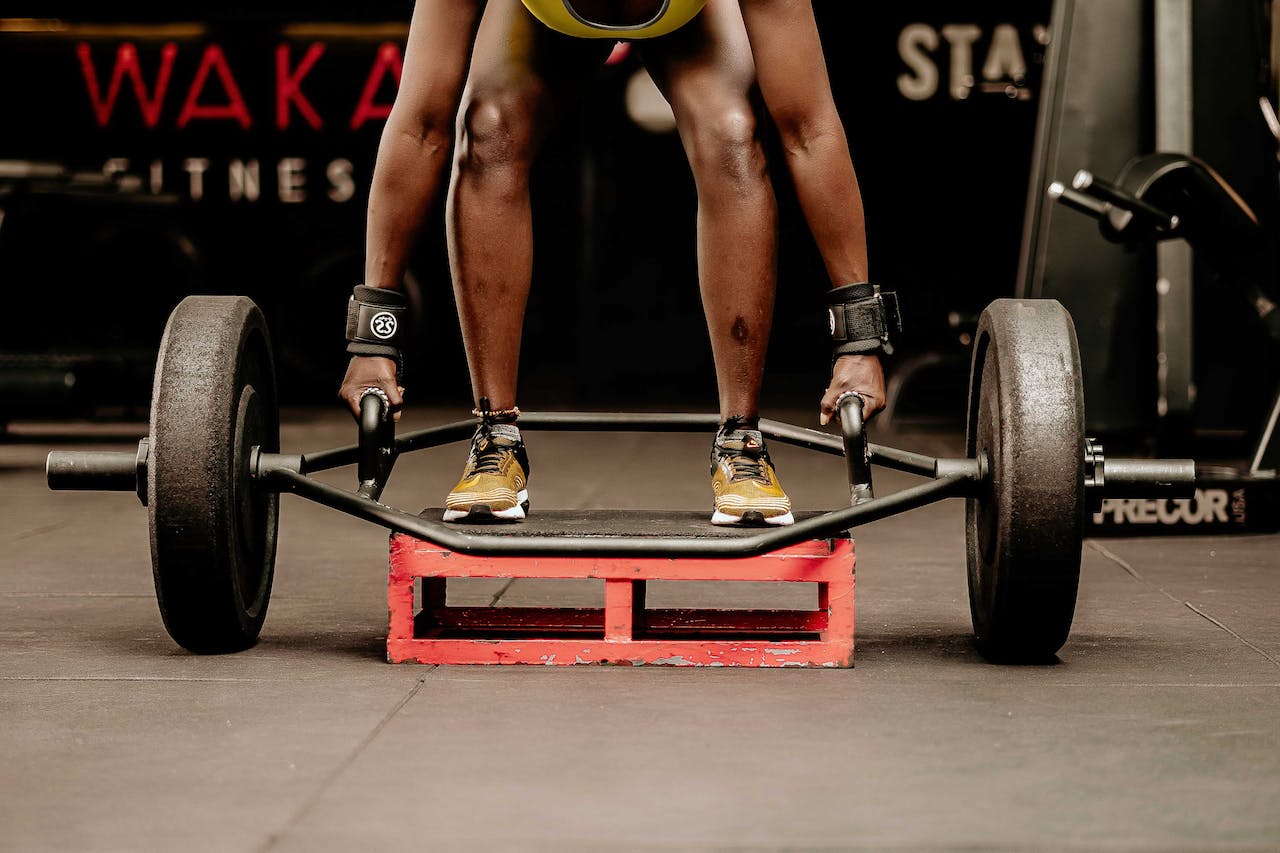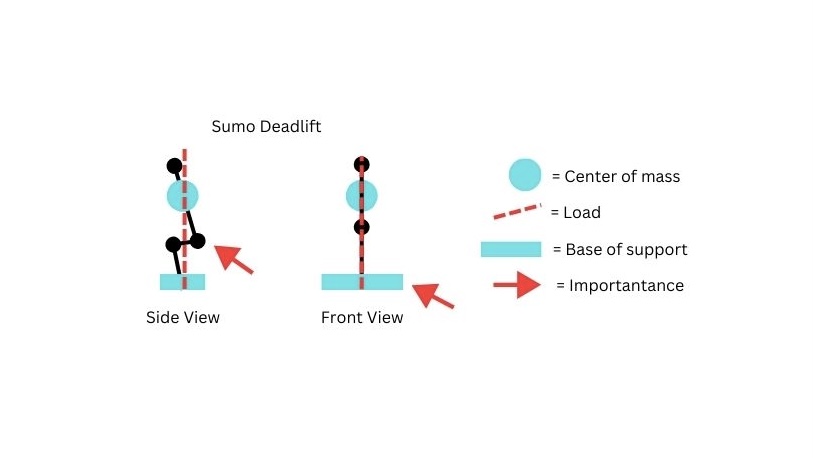The Big Debate
Probably one of the biggest debates in the strength world is if sumo deadlifts are cheating or not whether in competition or the gym during training. Despite the debate, people continue to pull their deadlifts using the sumo style to hoist monstrous amounts of weight.
I have my preferences and opinions when it comes to deadlifting but that’s come with experience and skin in the game. Today I’m going to take you guys through the differences and benefits between both of these stances at a level of biomechanics as well as what I’ve noticed from pulling 500lbs in both types of deadlifts.
The Sumo Deadlift
Lets dive right into it starting with the sumo deadlift. We’ll start with some basic biomechanics, looking at the lift from to different points of view as seen above.
From the side view you can see our main focus is the angle of the hip crease. Sumo deadlift allows us to keep a pretty open hip angle which allows us to leverage and bias different musculature like our adductors and quads.
From the second view point you can see that our base of support is much wider than a conventional deadlift. This in theory could lead to developing more internal rotation at the hips leading to more force production.
From personal experience, sumo deadlifts require a lot more patience off the floor due to the strength curve in the starting position. However, the benefits of sumo deadlifts shine when the bar begins to pass the knees towards the lockout of the lift. So, if you’re a lifter who nerds out over technical aspects of lifts, sumo deadlifts could be a great exercise for you to pursue.
Conventional Deadlift
Moving onto conventional deadlifts, probably the most common stance you’ll see in any gym that’s not dedicated to powerlifting.
From the side view you can see some pretty major differences occurring at the hip between the two stances. With the conventional deadlifts we see a more closed off hip angle and more open knee angle. This brings some different leverages and bias leaning more towards our whole posterior chain (hamstrings, glutes, erectors).
From the front you can see that our base of support is significantly smaller than what the sumo stance has to over. Although a wider stance COULD lead to more torque at the hip joint, you can easily achieve the same degree of internal rotation by modulating foot pressures with the smaller base of support.
From a personal view point, conventional deadlift gives room for a little more brute strength and muscling your way through not quite perfect technique. This isn’t necessary a bad thing, it allows for some pretty aggressive power off the floor but tends to lead to the sticking point up the chain towards lockout.
The Consensus
After touching briefly on some of the major differences between the two deadlifts and looking at it through a practical view, we can now draw a conclusion as to which lift is truly better.
Sumo deadlifts requires a degree of hip mobility and time to harness and dial in technique but can lead to some pretty impressive outcomes in terms of maximal weight moved.
Conventional deadlifts on the other hand doesn’t require the same hip mobility and can still be a great tool to dial in a really strong foundation of hip hinging to build upon.
Either way, I think we have to stop lumping these two deadlifts into the same category even though they both are deadlift variations. They both provide some pretty cool benefits in specific settings, just like every other exercise out there. The key is to know when and where the two deadlifts can be useful.
Any questions regarding deadlifts? Shoot me an email [email protected] or check out my instagram @Coach.palfrey for more information.
Kindest regards, Coach Palfrey






